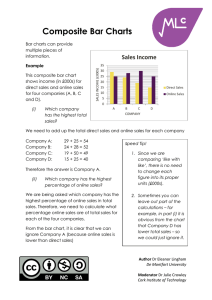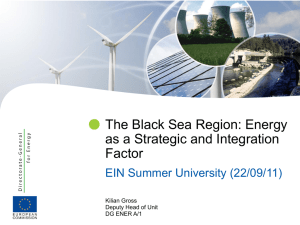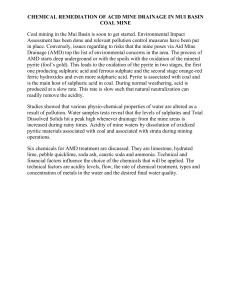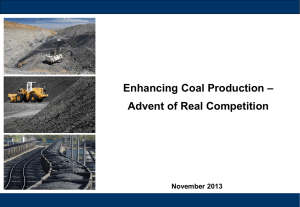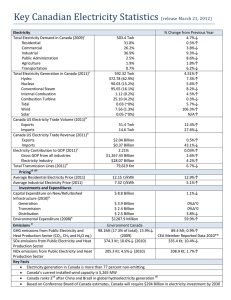Yield / Production
advertisement
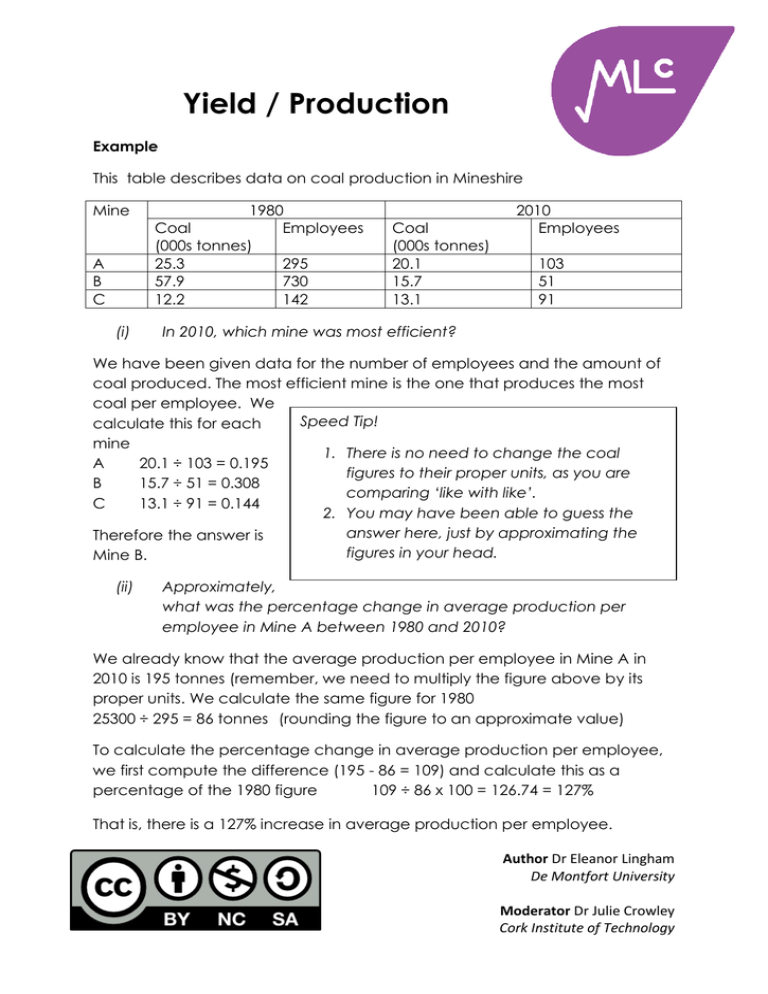
Yield / Production Example This table describes data on coal production in Mineshire Mine A B C (i) 1980 Coal Employees (000s tonnes) 25.3 295 57.9 730 12.2 142 Coal (000s tonnes) 20.1 15.7 13.1 2010 Employees 103 51 91 In 2010, which mine was most efficient? We have been given data for the number of employees and the amount of coal produced. The most efficient mine is the one that produces the most coal per employee. We Speed Tip! calculate this for each mine A 20.1 ÷ 103 = 0.195 B 15.7 ÷ 51 = 0.308 C 13.1 ÷ 91 = 0.144 Therefore the answer is Mine B. (ii) 1. There is no need to change the coal figures to their proper units, as you are comparing ‘like with like’. 2. You may have been able to guess the answer here, just by approximating the figures in your head. Approximately, what was the percentage change in average production per employee in Mine A between 1980 and 2010? We already know that the average production per employee in Mine A in 2010 is 195 tonnes (remember, we need to multiply the figure above by its proper units. We calculate the same figure for 1980 25300 ÷ 295 = 86 tonnes (rounding the figure to an approximate value) To calculate the percentage change in average production per employee, we first compute the difference (195 - 86 = 109) and calculate this as a percentage of the 1980 figure 109 ÷ 86 x 100 = 126.74 = 127% That is, there is a 127% increase in average production per employee. Author Dr Eleanor Lingham De Montfort University Moderator Dr Julie Crowley Cork Institute of Technology Example Energy Production 2005 2015 (Total Output: 200 TWh) (Total Output: 220 TWh) 5% 20% 30% 8% Nuclear Coal Gas 34% Other 45% (i) 22% 36% If 350,000 litres of gas were used in energy production in 2005, and efficiency remained the same, how many litres of gas were used to produce energy in 2015? In 2005, 350,000L of gas were used to produce 30% of 200 TWh. We calculate this amount of energy first 200 x 30% = 60 TWh We next calculate what each litre of gas produced 60 ÷ 350000 = 0.000171428 TWh In 2015, gas produced 34% of 220 TWh. Again, we calculate how much energy this is 220 x 34% = 74.8 TWh Since efficiency remains the same, we can calculate how many litres of gas were used 74.8 ÷ 0.000171428 = 436334.8 = 436335L of gas The answer is therefore 436,335 litres of gas. (ii) Forecasters believe that energy production will increase by 6% from 2015 to 2025, and that nuclear energy will generate 27% of this energy. What will the total output from nuclear energy be in 2025? First we need to calculate 106% of 220 TWh, to work out what total energy production in 2025 will be 220 x 106% = 233.2 TWh Next we need to calculate 27% of this 233.2 x 27% = 62.964 TWh Therefore 62.964 TWh will be produced by nuclear energy. Author Dr Eleanor Lingham De Montfort University Moderator Dr Julie Crowley Cork Institute of Technology
